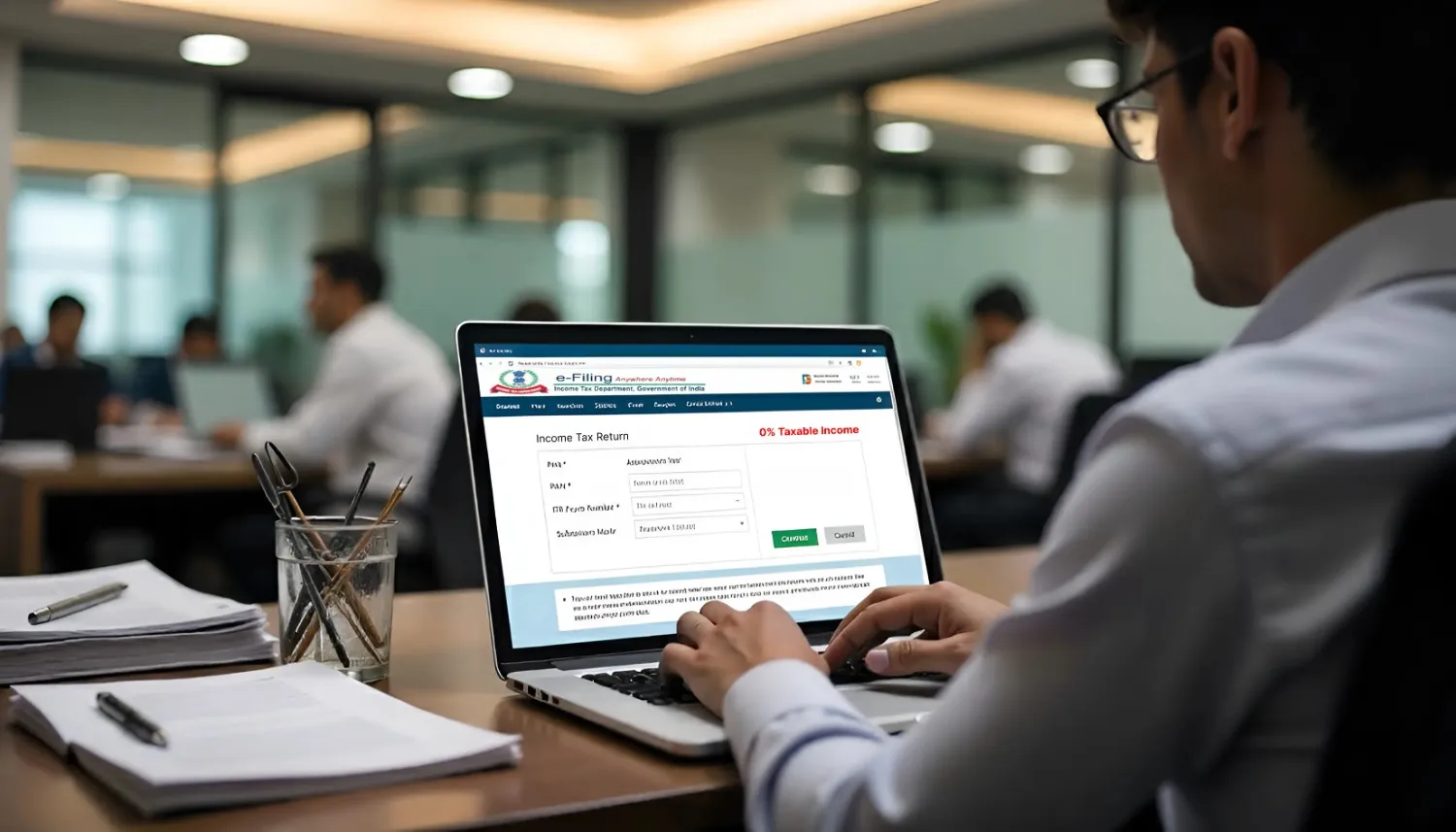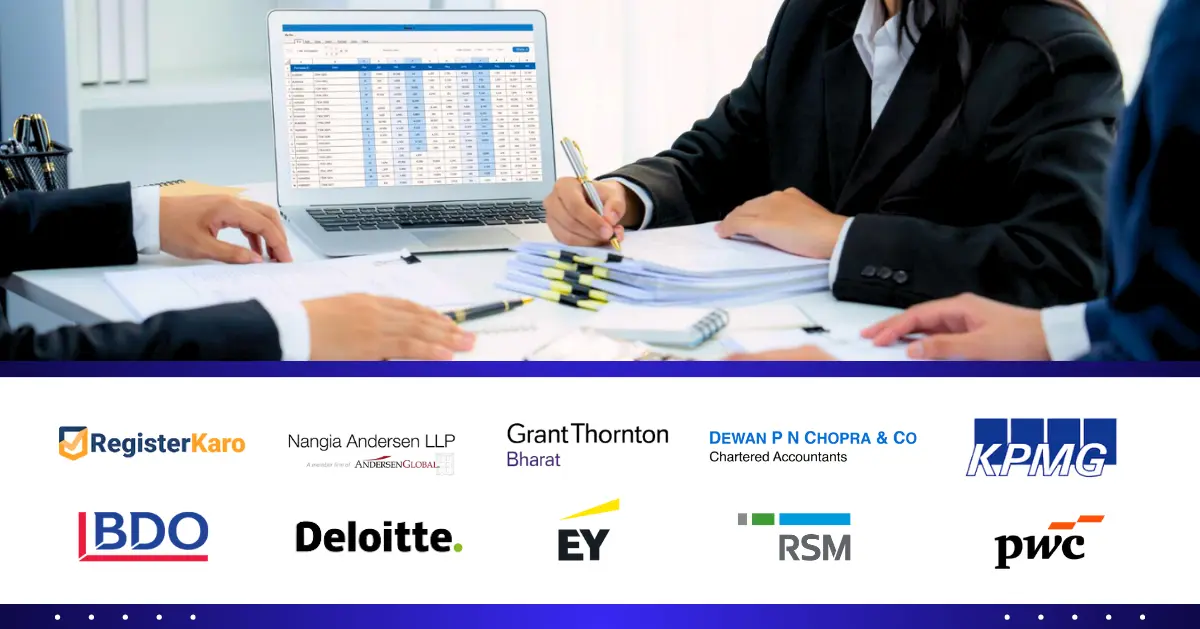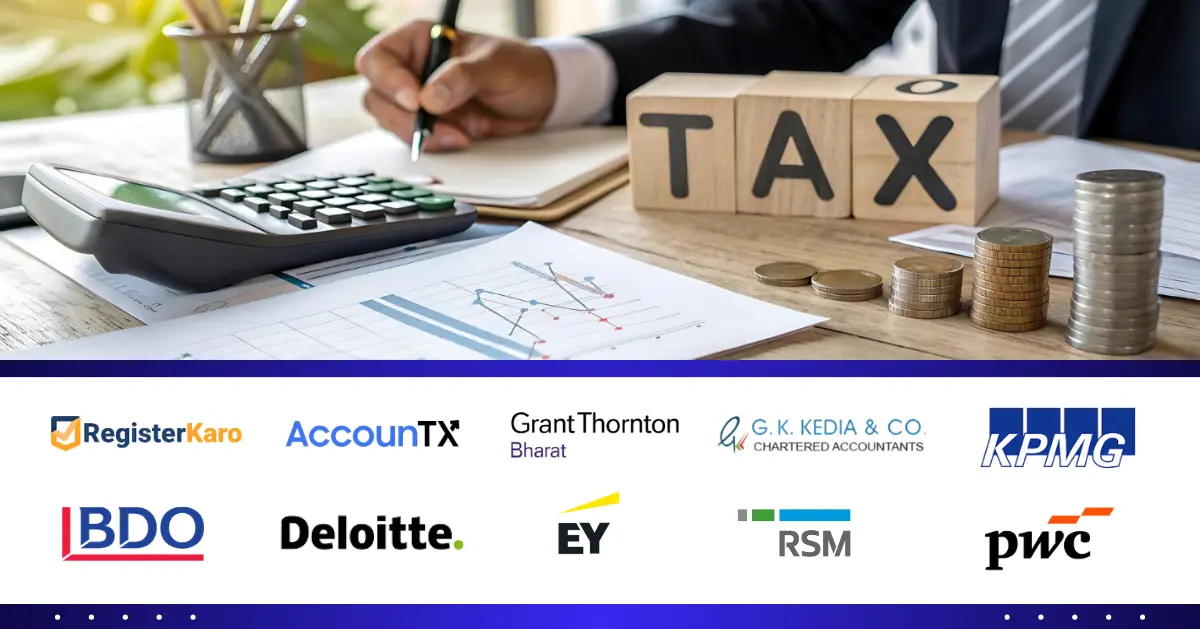
Introduction
The Goods and Services Tax (GST) has revolutionized the Indian tax system, simplifying indirect taxation across various sectors. However, certain transactions require special tax handling under the Reverse Charge Mechanism (RCM), where the recipient is responsible for tax payment instead of the supplier.
The Reverse Charge Mechanism (RCM) in GST is an important concept that shifts the liability of paying tax from the supplier to the recipient of goods or services. Understanding RCM is crucial for businesses to ensure GST compliance, avoid penalties, and effectively manage input tax credits (ITC).
What is Reverse Charge Mechanism (RCM) in GST?
The Reverse Charge Mechanism (RCM) under GST is a system where the liability to pay tax shifts from the supplier to the recipient of goods or services. This mechanism is introduced to bring unorganized sectors into the tax framework and ensure tax compliance in cases where the supplier is not liable to collect GST.
Why Was RCM in GST Introduced?
The Reverse Charge Mechanism (RCM) was introduced in GST to address several challenges in tax collection and compliance. The primary goal of RCM is to ensure that tax liabilities are fulfilled in cases where the supplier is not responsible for collecting GST. This mechanism enhances tax GST compliance in India, prevents revenue leakage, and ensures that businesses and individuals contribute their fair share of taxes.
1. To Bring Unregistered Suppliers into the Tax Net
Challenge: Many small and unorganized businesses operate without GST registration, leading to tax evasion.
Solution: Under RCM, when a registered business purchases goods or services from an unregistered supplier, the recipient is responsible for paying GST. This ensures that all transactions are taxed, even if the supplier is not registered.
2. To Prevent Tax Evasion and Revenue Leakage
Challenge: Some businesses intentionally avoid GST registration to evade taxes. They conduct transactions with multiple unregistered entities to stay below the registration threshold.
Solution: By shifting the tax liability to the recipient of goods/services, RCM discourages tax evasion. Registered businesses are required to pay GST under RCM and report it in their tax filings, thereby increasing tax transparency.
3. To Ensure Tax Collection on Imports and Specific Transactions
Challenge: Importers previously avoided paying service tax and VAT on international services or purchases, leading to revenue loss for the government.
Solution: Under RCM, importers must pay Integrated GST (IGST) when bringing goods or services into India. This ensures that imports are taxed fairly, just like domestic purchases.
4. To Improve Compliance in Specific Sectors
Challenge: Certain industries, such as legal, security, and transportation services, have a high proportion of unregistered service providers. This makes tax collection difficult.
Solution: The government has notified specific services (such as legal services, goods transport agencies, and security services) where the recipient is required to pay GST under RCM.
When Does RCM in GST Apply?
Under Section 9(3) of the CGST Act, the government has issued a list of goods and services for which RCM applies. In these cases, even if the supplier is registered under GST, the RCM tax liability is transferred to the recipient of the supply.
RCM is applicable under two main conditions:
1. Supplies Notified by the Government Under Section 9(3) of CGST Act
The government has notified specific goods and services where RCM applies. In these cases, the recipient must pay GST instead of the supplier.
Examples of Notified Goods Under RCM:
- Cashew nuts (not shelled or peeled) – Tax to be paid by the buyer.
- Tendu leaves – Used for bidi manufacturing; GST paid by the recipient.
- Tobacco leaves – Tax to be paid by the manufacturer or buyer.
- Supply of lottery tickets – Distributor or selling agent pays GST under RCM.
Examples of Notified Services Under RCM:
- Legal Services – GST on services provided by an advocate or law firm is payable by the recipient.
- Transport of Goods by GTA (Goods Transport Agency) – GST liability falls on the business receiving the service.
- Director’s Fees – If a company pays a fee to its directors, it must pay GST under RCM.
- Security Services – If security services are availed from an unregistered provider, the recipient pays GST.
2. Supplies from an Unregistered Supplier Under Section 9(4) of CGST Act
In a typical GST transaction, the supplier is responsible for collecting and remitting GST to the government. However, when a registered business purchases goods or services from an unregistered supplier, the government ensures tax compliance by shifting the RCM tax liability to the recipient of the supply under Section 9(4) of the CGST Act.
- If a registered business purchases goods or services from an unregistered supplier, RCM is applicable.
- The recipient must pay GST at the applicable rate.
- Example: A registered company hiring an unregistered caterer for an event must pay GST under RCM.
3. Import of Goods and Services
Global trade has become a crucial part of modern business, with many companies importing goods and services from foreign suppliers. However, since these foreign suppliers are not registered under Indian GST laws, the tax liability shifts to the Indian recipient under the Reverse Charge Mechanism (RCM).
- GST on imports is always paid by the importer under RCM.
- Customs duty, IGST, and other charges apply at the time of importation.
- Example: A business importing software services from the US must pay GST under RCM.
Step-by-Step Guide to Calculate and Pay GST Under RCM
Paying GST under the Reverse Charge Mechanism (RCM) requires a structured approach to ensure accurate tax calculation, timely payment, and proper compliance with GST laws.
Here is the step-by-step guide for tax filing under RCM:
Step 1: Determine the Applicable GST Rate
The first step in paying GST under the Reverse Charge Mechanism (RCM) is to identify the correct GST rate applicable to the goods or services in question. Since different goods and services have varying tax rates, the recipient must refer to the GST rate schedule and government notifications to determine the applicable rate.
- GST rates under RCM are the same as those applicable under the forward charge mechanism.
- The government has notified specific goods and services under RCM (e.g., legal services, import of services, GTA services, raw cotton).
- The recipient must check if the supplier is unregistered, as RCM applies in such cases.
Step 2: Compute Tax Liability
Once the applicable GST rate is identified, the recipient must compute the tax liability based on the transaction value. The tax is calculated as a percentage of the taxable value of the goods or services received.
Considerations:
- The transaction value includes the base price but excludes GST since it is being paid separately under RCM.
- The recipient is responsible for ensuring accurate tax calculations to avoid compliance issues.
Step 3: Payment of GST Under RCM
GST under RCM must be paid by the recipient in cash through the GST portal. Unlike regular GST payments, where suppliers collect and remit tax, RCM places the responsibility of payment directly on the recipient.
Rules for Payment Under RCM:
- GST must be paid in cash – Input Tax Credit (ITC) cannot be used for this payment.
- Self-invoicing is mandatory – Since the supplier does not charge GST, the recipient must generate a self-invoice.
Steps to Pay GST Under RCM
Once the GST liability under the Reverse Charge Mechanism (RCM) is determined, the next crucial step is to make the payment correctly to ensure compliance with GST laws.
- Login to the GST Portal (www.gst.gov.in).
- Navigate to Services > Payments > Create Challan.
- Select “Reverse Charge Liability” under the tax head.
- Enter the calculated GST amount and choose cash payment mode.
- Make the payment via net banking, NEFT, RTGS, or over-the-counter deposit.
- Once payment is successful, download the challan receipt for records.
Step 4: Filing of GST Returns
After making the GST payment, the recipient must report RCM transactions in GST returns. This ensures transparency and allows the recipient to claim an Input Tax Credit (ITC) on tax paid under RCM.
Where to Report RCM Transactions in GST Returns: Tax Filing Under RCM
1. Reporting in GSTR-3B (Monthly Summary Return)
- Table 3.1(d) of GSTR-3B – Report total tax liability under RCM.
- Table 4(A)(3) of GSTR-3B – Report ITC claimed on RCM tax paid.
2. Reporting in GSTR-1 (Outward Supply Return)
- Table 4B of GSTR-1 – Report supplies liable under RCM.
Claiming Input Tax Credit (ITC) on RCM Payments:
- ITC on RCM payments can be claimed only after the GST has been paid.
- ITC must be reported in Table 4(A)(3) of GSTR-3B.
- The goods/services must be used for business purposes to claim ITC.
Input Tax Credit (ITC) on RCM Payments
One of the key benefits of the Reverse Charge Mechanism (RCM) is that the recipient of goods or services can claim an Input Tax Credit (ITC) on the GST paid under RCM. Since the tax liability shifts from the supplier to the recipient, businesses must first pay GST in cash and then claim ITC in their GST returns to reduce their overall tax liability.
Navigating the complexities of the Reverse Charge Mechanism (RCM) in GST can be challenging, especially for businesses unfamiliar with tax compliance requirements. This is where RegisterKaro, a leading business compliance service provider, comes into play. RegisterKaro offers expert assistance in GST registration, RCM compliance, tax filing, and advisory services, ensuring businesses meet all regulatory obligations seamlessly.
Conditions for Claiming ITC on RCM Payments
While businesses can claim Input Tax Credit (ITC) on GST paid under the Reverse Charge Mechanism (RCM), it is not an automatic process. Certain eligibility conditions must be met to ensure compliance with GST regulations. The primary requirement is that the recipient must first pay the GST liability in cash before claiming ITC.
To claim Input Tax Credit (ITC) on RCM payments, businesses must fulfill the following conditions:
1. GST must be paid first – ITC can only be claimed after the recipient has paid the GST liability under RCM.
2. Goods or services must be used for business purposes – ITC cannot be claimed for personal expenses.
3. Proper self-invoicing and documentation – The recipient must issue a self-invoice since the supplier does not charge GST.
4. The recipient must be registered under GST – ITC is available only to registered taxpayers.
5. RCM tax must be reported in GSTR-3B – ITC can only be claimed if the liability is correctly reported in GST returns.
Compliance Requirements for RCM in GST
The Reverse Charge Mechanism (RCM) under GST imposes additional compliance responsibilities on the recipient of goods or services, unlike the regular GST process where suppliers collect and remit tax. Under RCM, the recipient is liable to calculate, pay, and report GST, making it essential to maintain proper documentation, timely payments, and accurate GST return filings.
1. Payment of GST Under RCM
Under RCM, GST must be paid by the recipient of goods or services. Unlike normal GST payments, where businesses can use Input Tax Credit (ITC) to offset their liability, RCM tax must be paid in cash through the GST portal.
Key Compliance Requirements:
1. Pay GST using Form GST PMT-06 – Businesses must generate a challan and pay tax using net banking, NEFT, RTGS, or over-the-counter payment.
2. Ensure timely payment – GST under RCM must be paid by the due date of filing GSTR-3B to avoid penalties and interest.
3. Self-invoicing requirement – Since suppliers do not charge GST, the recipient must issue a self-invoice.
4. Maintain proof of payment – Keep challan receipts as evidence of tax payment.
2. Issuing Self-Invoice and Payment Vouchers
Since the supplier does not collect GST under RCM, the recipient is required to generate self-invoices and payment vouchers to document the transaction properly. A payment voucher must be issued when making the payment to an unregistered supplier under RCM.
3. Record-Keeping and Documentation
Proper record-keeping is crucial for RCM compliance. Since tax officers may audit transactions, businesses must maintain proper invoices, payment records, and return filings.
Key Compliance Requirements:
- Maintain invoices, challans, and payment vouchers for all RCM transactions.
- Keep proof of GST payments made under RCM (challans from GST portal)
- Retain all records for at least 6 years, as per GST law.
- Ensure proper reconciliation of books of accounts with GST return
4. Interest and Penalties for Non-Compliance
Failure to comply with RCM regulations can lead to penalties, interest, and legal consequences. Businesses must ensure they pay GST on time, report transactions correctly, and maintain proper records.
Penalties for Non-Compliance:
1. Failure to pay GST under RCM – Penalty of 10% of the tax amount (minimum ₹10,000) or 100% of the tax due, whichever is higher.
2. Delayed GST payment – Interest at 18% per annum on unpaid tax.
3. Incorrect GST return filing – Late fees of ₹50 per day (₹20 per day for NIL returns).
4. Failure to issue self-invoice – Non-compliance may lead to rejection of ITC claims and penalties.
Conclusion
The Reverse Charge Mechanism (RCM) in GST ensures tax compliance for specific transactions where the supplier is not liable to collect tax. Businesses must understand when RCM applies, how to calculate and pay GST, and how to claim Input Tax Credit (ITC) to ensure smooth operations. Proper documentation and timely payment are crucial for avoiding penalties and ensuring GST compliance.
Stay GST-compliant and avoid penalties! Need expert assistance with RCM in GST? Contact a tax consultant or visit the GST portal for up-to-date guidelines. Contact RegisterKaro for more information.
Frequently Asked Questions
RCM applies only when dealing with notified goods/services, purchases from unregistered suppliers, or imports.




